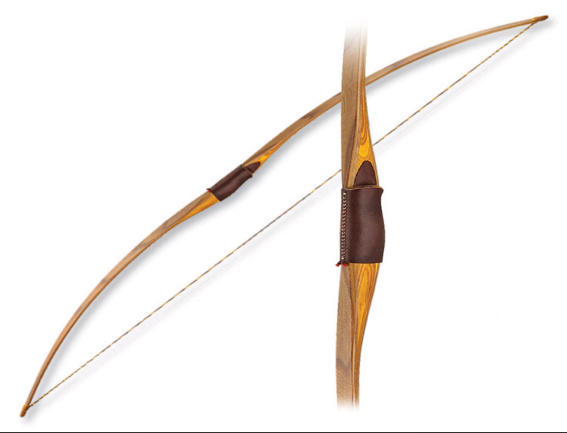Probably most famous for their use in the Battle of Agincourt, the English longbow has been synonymous with victory and prestige for centuries. The longbows domination on the battlefields was largely due to its power – a power with which a steel bodkin point arrow could easily pierce armour if held in the right hands.
The heyday of the longbow is considered to be somewhere between 1250 and 1450 AD. However, the longbow has been around for considerably longer, as the Battle of Hastings shows. Nevertheless, it was the 14th and 15th century in which they took prominence, most notably during the Wars of Scottish Independence and the Hundred Years’ War.
From the 16th century onwards, firearms began to take over as the weapon of choice. Advances in gunpowder weaponry hugely affected the longbow, although the English Crown made valiant attempts to continue with tradition by fining people who were not in the possession of a bow and banning sports other than archery.
The key attribute to a longbow is, unsurprisingly, its length. However, the actual length of each bow varies as they are generally made-to-measure for the individual, but it must be long enough so that the string can be drawn back to a point on the body or face. The excavation of the Mary Rose uncovered a variety of lengths from 6 ft 2 in (1.87m) through to 6 ft 11 in (2.11m). The average of all longbows found on the vessel was 6 ft 6 in (1.98m) long, so it is easy to see how this weapon came about its name.


A number of different woods were used in the manufacture of longbows; however, yew was commonly the preferred material from which they were made. In fact, the trade in yew became so popular that huge areas experienced large losses of the species, one of only three evergreen trees that are indigenous to the United Kingdom.
The construction begins with a drying process that could take anywhere up to two years to complete, then a further lengthy process of shaping was undertaken to form the traditional D-section that has become so familiar. The outer edge, or the ‘back’, of the bow was sapwood, with the inner side, or ‘belly’, heartwood. This gave the longbow a natural laminate formed from a single piece of wood and the life of such a bow could be considerable if treated with a coating of resin, wax and fine tallow to perform the task of waterproofing.
This specific use of the wood is also what gave the longbow its power as the heartwood offers greater resistance to compression while the outer portion of sapwood allowed for higher tension. By following the natural growth rings of the tree, bowyers were able to adapt the existing integrity of the wood into the design that made the longbow such a formidable weapon.
Last but not least is the string. Traditional bowstrings were made from flax, silk or hemp and many bowyers continue to use these materials to this day. ‘Nocks’ were fitted onto the ends of the bow to allow the string to be attached at precisely the right tension. Sinew or hide was also used to make strings throughout history, although their ineffectiveness when wet made the natural vegetable fibres preferable.
Craftsmanship, knowledge and the correct materials made the longbow the powerful weapon that has become legendary throughout the ages. Had it not been for the advances in gunpowder weaponry, the longbow would have undoubtedly continued to be the number one weapon of warfare for many more years such was its effectiveness.
Adam Jenkins is a co-director at Now Strike Archery, and he runs traditional yew longbow making courses, archery lessons and corporate events. Now Strike Archery also run “Have a go with a Longbow” sessions at historic events.
You must be logged in to post a comment.